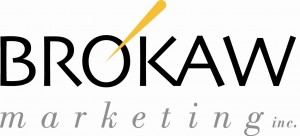Studies In Marketing Biography
Introduction
The market research institute Ceresana expects the global bioplastics market to reach revenues of more than US$2.8 billion in 2018 - reflecting average annual growth rates of 17.8%. High expectations will still be placed on the bioplastics industry in future. Bioplastics are supposed to contribute to protecting the climate, provide a solution for the waste issue, reduce the dependence on fossil raw materials, and improve the image of plastic products. With a roughly 48% share, Europe was the largest outlet for bioplastics in 2010, followed by North America and Asia-Pacific.
Over the next eight years, shares in demand of the individual world regions will shift significantly. Ceresana forecasts two regions to considerably influence the bioplastics market. Because of dynamic growth in consumption and production, Asia-Pacific will expand its share of bioplastics demand. As a result, Asia-Pacific will almost draw level with Europe and North America. In addition, South America will see strong growth, mainly because of massive increases in production in Brazil.
Demand trends of the individual types of bioplastics show significant regional differences. While PLA demand in North America is projected to rise by 12% per year, it will soar by almost 17% per year in Asia-Pacific.
In 2010, most demand was accounted for by starch-based plastics, followed by polylactic acid (PLA). Other bio-based plastics (PHA/PHB, cellulose, PBS) as well as fossil-based biodegradable plastics accounted for just less than 17% of global demand. Accordingly, biodegradable plastics are dominating the bioplastics market with a roughly 92% share. Non-biodegradable plastics based on renewable resources are forecasted to increase their market share from 8% in 2010 to more than 47% by 2018.
The report explains how product innovations, new production capacities, legislative changes, and growing environmental awareness will impact the market. Technical progress in production and significant growth in capacities will allow manufacturers to lower prices and therefore to further increase the competitiveness of bioplastics against conventional plastics. More growth prospects are provided by new products: The extended product range allows for using bioplastics in an increasing number of application areas.
The study analyzes how bioplastics consumption will develop in the individual markets. Most important buyers worldwide include manufacturers of bags and sacks. Loose-fill ranks second, closely followed by packaging and films. The automotive and electronic industries as well as other applications, e.g. catering products, hygiene products, textiles, and sports & leisure products, account for just less than one fifth of global demand.
Although bags & sacks and loose-fill are expected to register further growth over the next years, packaging & films as well as automotive & electronics will see the biggest gain. Due to an extended product range of biodegradable products, these areas are predicted to record annual increases of more than 30%.
The report comprises more than 445 pages and offers you the decisive competitive advantage. An 8-year review as well as production, revenue and demand forecasts up to 2018 - split by application, bioplastic types, and countries - provide the information and tools to help you make important business decisions.
Introduction
The market research institute Ceresana expects the global bioplastics market to reach revenues of more than US$2.8 billion in 2018 - reflecting average annual growth rates of 17.8%. High expectations will still be placed on the bioplastics industry in future. Bioplastics are supposed to contribute to protecting the climate, provide a solution for the waste issue, reduce the dependence on fossil raw materials, and improve the image of plastic products. With a roughly 48% share, Europe was the largest outlet for bioplastics in 2010, followed by North America and Asia-Pacific.
Over the next eight years, shares in demand of the individual world regions will shift significantly. Ceresana forecasts two regions to considerably influence the bioplastics market. Because of dynamic growth in consumption and production, Asia-Pacific will expand its share of bioplastics demand. As a result, Asia-Pacific will almost draw level with Europe and North America. In addition, South America will see strong growth, mainly because of massive increases in production in Brazil.
Demand trends of the individual types of bioplastics show significant regional differences. While PLA demand in North America is projected to rise by 12% per year, it will soar by almost 17% per year in Asia-Pacific.
In 2010, most demand was accounted for by starch-based plastics, followed by polylactic acid (PLA). Other bio-based plastics (PHA/PHB, cellulose, PBS) as well as fossil-based biodegradable plastics accounted for just less than 17% of global demand. Accordingly, biodegradable plastics are dominating the bioplastics market with a roughly 92% share. Non-biodegradable plastics based on renewable resources are forecasted to increase their market share from 8% in 2010 to more than 47% by 2018.
The report explains how product innovations, new production capacities, legislative changes, and growing environmental awareness will impact the market. Technical progress in production and significant growth in capacities will allow manufacturers to lower prices and therefore to further increase the competitiveness of bioplastics against conventional plastics. More growth prospects are provided by new products: The extended product range allows for using bioplastics in an increasing number of application areas.
The study analyzes how bioplastics consumption will develop in the individual markets. Most important buyers worldwide include manufacturers of bags and sacks. Loose-fill ranks second, closely followed by packaging and films. The automotive and electronic industries as well as other applications, e.g. catering products, hygiene products, textiles, and sports & leisure products, account for just less than one fifth of global demand.
Although bags & sacks and loose-fill are expected to register further growth over the next years, packaging & films as well as automotive & electronics will see the biggest gain. Due to an extended product range of biodegradable products, these areas are predicted to record annual increases of more than 30%.
The report comprises more than 445 pages and offers you the decisive competitive advantage. An 8-year review as well as production, revenue and demand forecasts up to 2018 - split by application, bioplastic types, and countries - provide the information and tools to help you make important business decisions.
Studies In Marketing
Studies In Marketing
Studies In Marketing
Studies In Marketing
Studies In Marketing
Studies In Marketing
Studies In Marketing
Studies In Marketing
Studies In Marketing
Studies In Marketing
Studies In Marketing
Studies In Marketing












No comments:
Post a Comment